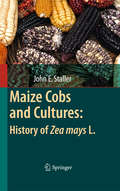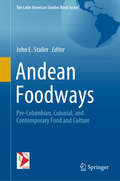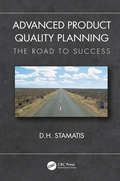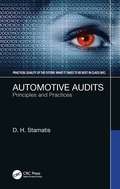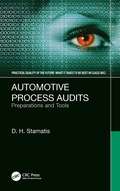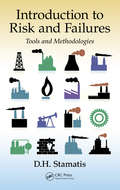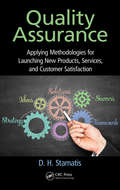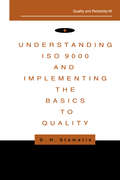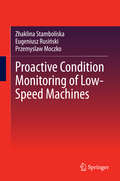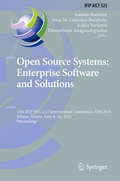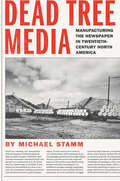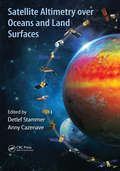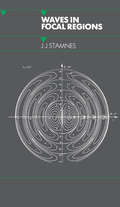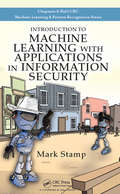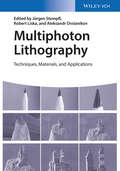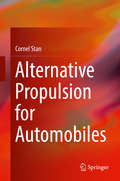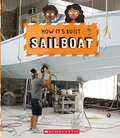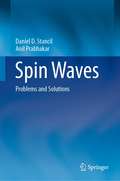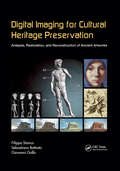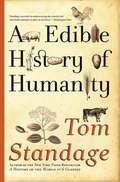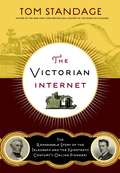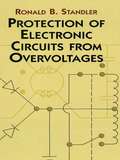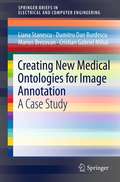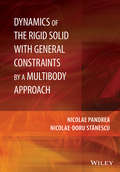- Table View
- List View
Maize Cobs and Cultures: History of Zea mays L.
by John StallerOur perceptions and conceptions regarding the roles and importance of maize to ancient economies is largely a product of scientific research on the plant itself, developed for the most part out of botanical research, and its recent role as one of the most important economic staples in the world. Anthropological research in the early part of the last century based largely upon the historical particularistic approach of the Boasian tradition provided the first evidence that challenged the assumptions about the economic importance of maize to sociocultural developments for scholars of prehistory. Subsequent ethnobotanic and archaeological studies showed that the role of maize among Native American cultures was much more complex than just as a food staple. In Maize Cobs and Cultures, John Staller provides a survey of the ethnohistory and the scientific, botanical and biological research of maize, complemented by reviews on the ethnobotanic, interdisciplinary and multidisciplinary methodologies.
Andean Foodways: Pre-Columbian, Colonial, and Contemporary Food and Culture (The Latin American Studies Book Series)
by John E. StallerThere is widespread acknowledgement among anthropologists, archaeologists, ethnobotanists, as well as researchers in related disciplines that specific foods and cuisines are linked very strongly to the formation and maintenance of cultural identity and ethnicity. Strong associations of foodways with culture are particularly characteristic of South American Andean cultures. Food and drink convey complex social and cultural meanings that can provide insights into regional interactions, social complexity, cultural hybridization, and ethnogenesis. This edited volume presents novel and creative anthropological, archaeological, historical, and iconographic research on Andean food and culture from diverse temporal periods and spatial settings. The breadth and scope of the contributions provides original insights into a diversity of topics, such as the role of food in Andean political economies, the transformation of foodways and cuisines through time, and ancient iconographic representations of plants and animals that were used as food. Thus, this volume is distinguished from most of the published literature in that specific foods, cuisines, and culinary practices are the primary subject matter through which aspects of Andean culture are interpreted.
Advanced Product Quality Planning: The Road to Success (Practical Quality of the Future)
by D. H. StamatisThis book defines, develops, and examines the foundations of the APQP (Advanced Product Quality Planning) methodology. It explains in detail the five phases, and it relates its significance to national, international, and customer specific standards. It also includes additional information on the PPAP (Production Part Approval Process), Risk, Warranty, GD&T (Geometric Dimensioning and Tolerancing), and the role of leadership as they apply to the continual improvement process of any organization. Features Defines and explains the five stages of APQP in detail Identifies and zeroes in on the critical steps of the APQP methodology Covers the issue of risk as it is defined in the ISO 9001, IATF 16949, the pending VDA, and the OEM requirements Presents the role of leadership and management in the APQP methodology Summarizes all of the change requirements of the IATF standard
Automotive Audits: Principles and Practices (Practical Quality of the Future)
by D. H. StamatisThis book addresses the essentials of an automotive audit which is required by all automotive suppliers world-wide. They are based on customer specific requirements, ISO standards, and Industry specifications. This book covers both the mandated documents and records that are necessary for compliance, with an extensive discussion on Layered Process Audits and distance auditing. The book addresses the six standards for certification in one volume. It explains “why” and “how” an effective audit should be carried out. It identifies the key indicators for a culture change with an audit, explains the “process audit” at length, discusses the rationale for Layered Process audits and summarizes all the mandatory documents and records for all standards and requirements. The book covers the issue of risk in auditing and emphasizes the role of a “checklist” in the preparation process. This book is for those that conduct audits, those that are interested in auditing, and those being audited. It specifically addresses automotive OEMs and their supplier base but is also of interest to anyone wanting information on auditing.
Automotive Process Audits: Preparations and Tools (Practical Quality of the Future)
by D. H. StamatisWith a detailed discussion on the preparation and tools needed for an automotive process audit, this book addresses the fundamental issues and concerns by focusing on two objectives: explaining the methods and tools used in the process for the organization, and provide a reference or manual for dealing with documenting quality issues. This book addresses the fundamental issues and concerns for a successful automotive process audit and details specifically how to prepare for it. It presents a complete assessment of what an organization must do to earn certification in ISO standards, industry standards, and customer-specific requirements. It also focuses on the efficiency of resources within an organization so that an audit can be successful and describes the methodologies to optimize the process by knowing what to do, what to say, and how to prove it. A road map is offered for the "process audit" and the "layered audit," and defines a clear distinction between the preparation details for each. This book is intended for those that conduct audits, those who are interested in auditing, and those who are being audited. It specifically addresses how to prepare for an automotive process audit for readers who are involved in quality, manufacturing, and operations management, and those who work with suppliers.
Introduction to Risk and Failures: Tools and Methodologies
by D. H. StamatisRisk is everywhere, in everything we do. Realizing this fact, we all must try to understand this "risk" and if possible to minimize it. This book expands the conversation beyond failure mode and effects analysis (FMEA) techniques. While FMEA is indeed a powerful tool to forecast failures for both design and processes, it is missing methods for considering safety issues, catastrophic events, and their consequences. This new book focuses on risk and HAZOP as they relate to major catastrophic events, safety, and risk.
Quality Assurance: Applying Methodologies for Launching New Products, Services, and Customer Satisfaction (Practical Quality Of The Future Ser.)
by D. H. StamatisAlthough regularly introducing new products or services is the lifeblood of most industries, bringing them to market can be fraught with peril. Timing, cost, and quality all play important roles in a successful product launch and avoiding expensive- often in more than just dollars- recalls and redesigns. Quality Assurance: Applying Methodologies fo
Understanding ISO 9000 and Implementing the Basics to Quality (Quality And Reliability Ser. #45)
by D.H. StamatisThis work examines the evolution and rationale of the ISO 9000 series of standards, their structure, interpretation and relationship to other quality systems. Theory and applications are provided, and the author explains how to put the standards into place and achieve quality. Specific methods and tools for the implementation of the ISO standards that lead to certification and certification maintenance are supplied.
Proactive Condition Monitoring of Low-Speed Machines
by Zhaklina Stamboliska Eugeniusz Rusiński Przemyslaw MoczkoThis book broadens readers' understanding of proactive condition monitoring of low- speed machines in heavy industries. It focuses on why low-speed machines are different than others and how maintenance of these machines should be implemented with particular attention. The authors explain the best available monitoring techniques for various equipment and the principle of how to get proactive information from each technique. They further put forward possible strategies for application of FEM for detection of faults and technical assessment of machinery. Implementation phases are described and industrial case studies of proactive condition monitoring are included. Proactive Condition Monitoring of Low-Speed Machines is an essential resource for engineers and technical managers across a range of industries as well as design engineers working in industrial product development.
Open Source Systems: 14th IFIP WG 2.13 International Conference, OSS 2018, Athens, Greece, June 8-10, 2018, Proceedings (IFIP Advances in Information and Communication Technology #525)
by Ioannis Stamelos Jesus M. Gonzalez-Barahoña Iraklis Varlamis Dimosthenis AnagnostopoulosThis book constitutes the refereed proceedings of the 14th IFIP WG 2.13 International Conference on Open Source Systems, OSS 2018, held in Athens, Greece, in June 2018.The 14 revised full papers and 2 short papers presented were carefully reviewed and selected from 38 submissions. The papers cover a wide range of topics in the field of free/libre open source software (FLOSS) and are organized in the following thematic sections: organizational aspects of OSS projects, OSS projects validity, mining OSS data, OSS in public administration, OSS governance, and OSS reusability.
Dead Tree Media: Manufacturing the Newspaper in Twentieth-Century North America (Hagley Library Studies in Business, Technology, and Politics)
by Michael StammA deep and timely account of how American newspapers were produced and distributed on paper.Winner of the Best Book in Canadian Business History by the Canadian Business History AssociationPopular assessments of printed newspapers have become so grim that some have taken to calling them "dead tree media" as a way of invoking the medium’s imminent demise. There is a literal truth hidden in this dismissive expression: printed newspapers really are material goods made from trees. And, throughout the twentieth century, the overwhelming majority of trees cut down in the service of printing newspapers in the United States came from Canada. In Dead Tree Media, Michael Stamm reveals the international history of the commodity chains connecting Canadian trees and US readers. Drawing on newly available corporate documents and research in archives across North America, Stamm offers a sophisticated rethinking of the material history of the printed newspaper. Tracing its industrial production from the forest to the newsstand, he provides an account of the obscure and often hidden labor involved in this manufacturing process by showing how it was driven by not only publishers and journalists but also lumberjacks, paper mill workers, policymakers, chemists, and urban and regional planners. Stamm describes the 1911 shift in tariff policy that gave US publishers duty-free access to Canadian newsprint, providing a tremendous boost to Canadian paper manufacturers and a significant subsidy to American newspaper publishers. He also explains how Canada attracted massive American foreign investment in paper mills around the same time that US publishers were able to gain greater access to Canada’s vast spruce forests. Focusing particularly on the Chicago Tribune, Stamm provides a new history of the rise and fall of both the mass circulation printed newspaper and the particular kind of corporation in the newspaper business that had shaped many aspects of the cultural, political, and even physical landscape of North America. For those seeking to understand the travails of the contemporary newspaper business, Dead Tree Media is essential reading.
Satellite Altimetry Over Oceans and Land Surfaces (Earth Observation of Global Changes)
by Detlef Stammer Anny CazenaveSatellite remote sensing, in particular by radar altimetry, is a crucial technique for observations of the ocean surface and of many aspects of land surfaces, and of paramount importance for climate and environmental studies. This book provides a state-of-the-art overview of the satellite altimetry techniques and related missions, and reviews the most-up-to date applications to ocean dynamics and sea level. It also discusses related space-based observations of the ocean surface and of the marine geoid, as well as applications of satellite altimetry to the cryosphere and land surface waters; operational oceanography and its applications to navigation, fishing and defense.
Waves in Focal Regions: Propagation, Diffraction and Focusing of Light, Sound and Water Waves
by J.J StamnesUsing numerous mathematical and numerical techniques of diffraction theory, Waves in Focal Regions: Propagation, Diffraction and Focusing of Light, Sound and Water Waves provides a full and richly illustrated description of waves in focal regions. Unlike most books, the author treats electromagnetic, acoustic, and water waves in one comprehensive volume. After an introductory section, the book describes approximate diffraction theories and efficient numerical methods to study the focusing of various kinds of waves. It then covers the physical interpretation of the theories, their accuracy, and the computational savings obtained, emphasizing uniform asymptotic results that remain valid in the vicinity of shadow boundaries and caustics. The next part deals with the focusing of scalar waves, including thorough theoretical analyses and detailed contour maps of diffraction patterns in focal regions for a variety of different system parameters, such as f-number, Frensel number, aperture shape, amplitude distribution, and wavefront aberration. The author proceeds to explore the diffraction and focusing of electromagnetic waves. First solutions are derived for fields radiated by sources, reflected and refracted at plane interfaces, or diffracted by apertures in plane screens, and then these solutions are applied to study the focusing in homogeneous media and through a plane dielectric interface. In both cases, the author includes many computed results of the electromagnetic field distribution near focus. Presenting both theoretical and experimental results, the following part examines the focusing of sound and water waves by means of zone-plate lenses. The book concludes with a detailed study of the diffraction and focusing of water waves and a comparison of the results of both linear and nonlinear theories with those of experiments.
Introduction to Machine Learning with Applications in Information Security
by Mark Stamp<p>Introduction to Machine Learning with Applications in Information Security provides a class-tested introduction to a wide variety of machine learning algorithms, reinforced through realistic applications. The book is accessible and doesn’t prove theorems, or otherwise dwell on mathematical theory. The goal is to present topics at an intuitive level, with just enough detail to clarify the underlying concepts. <p>The book covers core machine learning topics in-depth, including Hidden Markov Models, Principal Component Analysis, Support Vector Machines, and Clustering. It also includes coverage of Nearest Neighbors, Neural Networks, Boosting and AdaBoost, Random Forests, Linear Discriminant Analysis, Vector Quantization, Naive Bayes, Regression Analysis, Conditional Random Fields, and Data Analysis. <p>Most of the examples in the book are drawn from the field of information security, with many of the machine learning applications specifically focused on malware. The applications presented are designed to demystify machine learning techniques by providing straightforward scenarios. Many of the exercises in this book require some programming, and basic computing concepts are assumed in a few of the application sections. However, anyone with a modest amount of programming experience should have no trouble with this aspect of the book. <p>Instructor resources, including PowerPoint slides, lecture videos, and other relevant material are provided on an accompanying website: http://www.cs.sjsu.edu/~stamp/ML/. For the reader’s benefit, the figures in the book are also available in electronic form, and in color.
Malware Analysis Using Artificial Intelligence and Deep Learning
by Mark Stamp Mamoun Alazab Andrii ShalaginovThis book is focused on the use of deep learning (DL) and artificial intelligence (AI) as tools to advance the fields of malware detection and analysis. The individual chapters of the book deal with a wide variety of state-of-the-art AI and DL techniques, which are applied to a number of challenging malware-related problems. DL and AI based approaches to malware detection and analysis are largely data driven and hence minimal expert domain knowledge of malware is needed.This book fills a gap between the emerging fields of DL/AI and malware analysis. It covers a broad range of modern and practical DL and AI techniques, including frameworks and development tools enabling the audience to innovate with cutting-edge research advancements in a multitude of malware (and closely related) use cases.
Multiphoton Lithography: Techniques, Materials, and Applications
by Jürgen Stampfl Aleksandr Ovsianikov Robert LiskaThis first book on this fascinating, interdisciplinary topic meets the much-felt need for an up-to-date overview of the field. Written with both beginners and professionals in mind, this ready reference begins with an introductory section explaining the basics of the various multi-photon and photochemical processes together with a description of the equipment needed. A team of leading international experts provides the latest research results on such materials as new photoinitiators, hybrid photopolymers, and metallic carbon nanotube composites. They also cover promising applications and prospective trends, including photonic crystals, microfluidic devices, biological scaffolds, metamaterials, waveguides, and functionalized hydrogels. By bringing together the essentials for both industrial and academic researchers, this is an invaluable companion for materials scientists, polymer chemists, surface chemists, surface physicists, biophysicists, and medical scientists working with 3D micro- and nanostructures.
Alternative Propulsion for Automobiles
by Cornel StanThe book presents - based on the most recent research and development results worldwide - the perspectives of new propulsion concepts such as electric cars with batteries and fuel cells, and furthermore plug in hybrids with conventional and alternative fuels. The propulsion concepts are evaluated based on specific power, torque characteristic, acceleration behaviour, specific fuel consumption and pollutant emissions. The alternative fuels are discussed in terms of availability, production, technical complexity of the storage on board, costs, safety and infrastructure. The book presents summarized data about vehicles with electric and hybrid propulsion. The propulsion of future cars will be marked by diversity - from compact electric city cars and range extender vehicles for suburban and rural areas up to hybrid or plug in SUV´s, Pick up´s and luxury class automobiles.
Sailboat (How It's Built)
by Rebecca J. StanboroughKids are fascinated by how things are constructed, especially big things!This brand-new STEM (science, technology, engineering, and mathematics) series will take readers on visits to various work sites so they can see exactly How It’s Built! Kids will follow along as a small group of fictional characters get to find out exactly what it takes to build things that they probably see all the time, like bridges, houses, boats, and cars, to things that they might dream of being inside, like skyscrapers and rockets.
Spin Waves: Problems and Solutions
by Daniel D. Stancil Anil PrabhakarThis book presents a collection of problems in spin wave excitations with their detailed solutions. Each chapter briefly introduces the important concepts, encouraging the reader to further explore the physics of spin wave excitations and the engineering of spin wave devices by working through the accompanying problem sets. The initial chapters cover the fundamental aspects of magnetization, with its origins in quantum mechanics, followed by chapters on spin wave excitations, such as the magnetostatic approximation, Walker's equation, the spin wave manifold in the three different excitation geometries of forward volume, backward volume and surface waves, and the dispersion of spin waves. The latter chapters focus on the practical aspects of spin waves and spin wave optical devices and use the problem sets to introduce concepts such as variational analysis and coupled mode theory. Finally, for the more advanced reader, the book covers nonlinear interactions and topics such as spin wave quantization, spin torque excitations, and the inverse Doppler effect. The topics range in difficulty from elementary to advanced. All problems are solved in detail and the reader is encouraged to develop an understanding of spin wave excitations and spin wave devices while also strengthening their mathematical, analytical, and numerical programming skills.
Digital Imaging for Cultural Heritage Preservation: Analysis, Restoration, and Reconstruction of Ancient Artworks (Digital Imaging and Computer Vision)
by Filippo StancoThis edition presents the most prominent topics and applications of digital image processing, analysis, and computer graphics in the field of cultural heritage preservation. The text assumes prior knowledge of digital image processing and computer graphics fundamentals. Each chapter contains a table of contents, illustrations, and figures that elucidate the presented concepts in detail, as well as a chapter summary and a bibliography for further reading. Well-known experts cover a wide range of topics and related applications, including spectral imaging, automated restoration, computational reconstruction, digital reproduction, and 3D models.
An Edible History of Humanity
by Tom StandageIn this book, Tom Standage charts the enlightening history of humanity through the foods we eat. More than simply sustenance, food historically has been a kind of technology, changing the course of human progress by helping to build empires, promote industrialization, and decide the outcomes of wars. Tom Standage draws on archaeology, anthropology, and economics to reveal how food has helped shape and transform societies around the world, from the emergence of farming in China by 7500 b.c. to the use of sugar cane and corn to make ethanol today.
The Victorian Internet: The Remarkable Story of the Telegraph and the Nineteenth Century's On-line Pioneers
by Tom Standagehe Victorian Internet tells the colorful story of the telegraph's creation and remarkable impact, and of the visionaries, oddballs, and eccentrics who pioneered it, from the eighteenth-century French scientist Jean-Antoine Nollet to Samuel F. B. Morse and Thomas Edison.
Protection of Electronic Circuits from Overvoltages
by Ronald B. StandlerTemporary failure and permanent damage of electronic systems are often caused by electrical overstresses such as lightning, electromagnetic pulses from nuclear weapons, and switching of reactive loads. Protecting industrial, military, and consumer systems from failure is critical; and until the publication of this volume, the related literature was scattered throughout journals, patents, conference proceedings, military reports, and elsewhere. This convenient text presents practical rules and strategies for circuits designed to protect electronic systems from damage by transient overvoltages. Because many circuits operate from AC supply mains, protection of equipment operating from the mains is also discussed. The five-part treatment covers symptoms and threats, fundamental remedies, types of protective devices, applications of protective devices, and validation of protective measures. Specific topics include damage and upset, environmental threats, standard test waveforms, and properties of nonlinear transient protection devices, plus protective applications related to signal circuits, DC power supplies, and low-voltage AC mains.
Creating New Medical Ontologies for Image Annotation: A Case Study (SpringerBriefs in Electrical and Computer Engineering)
by Liana Stanescu Dumitru Dan Burdescu Marius Brezovan Cristian Gabriel MihaiCreating New Medical Ontologies for Image Annotation focuses on the problem of the medical images automatic annotation process, which is solved in an original manner by the authors. All the steps of this process are described in detail with algorithms, experiments and results. The original algorithms proposed by authors are compared with other efficient similar algorithms. In addition, the authors treat the problem of creating ontologies in an automatic way, starting from Medical Subject Headings (MESH). They have presented some efficient and relevant annotation models and also the basics of the annotation model used by the proposed system: Cross Media Relevance Models. Based on a text query the system will retrieve the images that contain objects described by the keywords.
Dynamics of the Rigid Solid with General Constraints by a Multibody Approach
by Nicolae-Doru Stanescu Nicolae PandreaCovers both holonomic and non-holonomic constraints in a study of the mechanics of the constrained rigid body. Covers all types of general constraints applicable to the solid rigid Performs calculations in matrix form Provides algorithms for the numerical calculations for each type of constraint Includes solved numerical examples Accompanied by a website hosting programs
